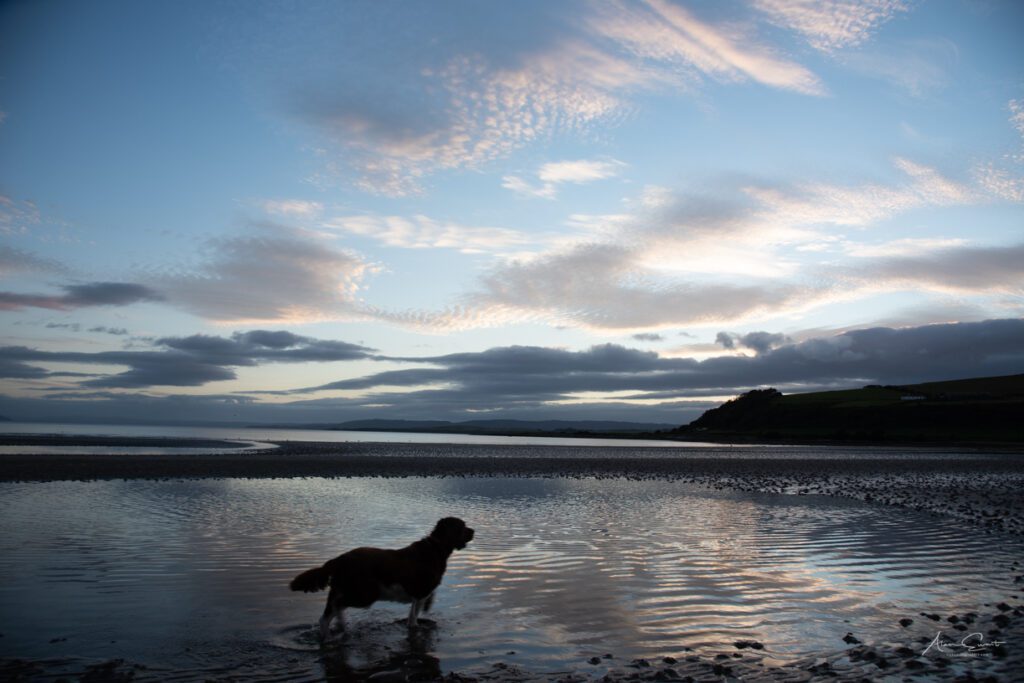
Chasing Light in Photography
At its most basic level photography is about capturing light, and in landscape photography chasing light is an essential skill. To explain the concept of “chasing light” I recently spent a week on Bute, Argyll, Scotland doing exactly that.
What do we mean by chasing light?

When we make a photograph, we do so by capturing light on film, or more commonly today, on a digital camera’s sensor.
We use light and shadow to add depth and interest to the captured image. In studio photography, we can use speed lights, strobes, reflectors, flags, or constant light sources to add light and shadow to our images.
We also use soft boxes, modifiers, and a range of lighting techniques to alter the shape and quality of light to our taste
To some extent, we can use the same techniques in outdoor photography. For example, we can mix flash and natural light when we photograph people in an outdoor setting. However, when we are engaged in landscape photography our choices become much more limited.
It is impossible to light an image like the one above using even the largest and most powerful flash system, though it is certainly possible to use flash to highlight a small part of the overall scene. However, those techniques are beyond the scope of this article.
In effect, this means that we are limited to using the light of the sun, moon or some sort of available light to provide the light needed to capture a landscape image. Clouds or mist become our light shapers and diffusers. Chasing light means simply selecting the best light available to ensure that your photography tells the story that you want to tell.
Chasing light at sunset or sunrise
If you examine any landscape photographer’s portfolio, you will doubtless see many images that were photographed at sunrise and sunset.
Have you ever asked yourself why this might be? Let’s consider the quality of light for a moment because this provides a clear explanation.
When a light source is far away and (or) small it provides a hard light. The sun is 93 million miles away and it appears as a small object in a vast sky. This means that the light is extremely hard, in fact it is probably the hardest of all light sources unless it is modified by shining through the clouds.

When the sun is rising or setting it becomes much softer because it is diffused by travelling through more of the earths atmosphere. Particles floating in the air reflect and diffuse the sun’s light making it softer. These particles have an additional benefit for photography, they create a huge range of beautiful colours in the atmosphere. These factors combine to create the most beautiful colourful photographs.
So, does this mean that we should make our landscape photographs at sunrise or sunset? Well, no, not really. It very much depends on what you want your image to convey. There is always a time and a place for any sort of light be it hard or soft light.
When might we prefer hard light?
If you examine the two images on the left you will see that there is a combination of hard and soft light. The image was taken at St Ninian’s bay on Bute, looking towards the Isle of Arran, at the end of September.
The light on the clouds is soft, but where the sun is breaking through the clouds the hard light is illuminating the rainfall. The effect is even more noticeable in the black and white image because of the higher degree of contrast between light and dark.
Hard light is particularly effective when you want a high degree of contrast in your images. Shadows are deepened and are much harder. This especially effective in Black and White images as the absence of colour highlights the contrasting tones. Hard light is great for adding depth to landscape images of rocks, mountains, and rough seas.
How do we chase light?
I think that it’s important to say that chasing light isn’t necessarily about driving long distances or jumping onto an aeroplane to find the perfect lighting conditions. You can just as easily chase the light in your own back garden.
I am much more likely to find great spots to make landscape images when I am out walking my dogs. It helps to visit potential photography sites at different times of the day and in different weather conditions. Pause and look at the scene, view it from different angles, watch how the light changes the scene and how it highlights things that may not have been apparent in different lighting conditions. It does take practice but good photographers learn to “see the light.”
Like any skill, “seeing the light” takes practice, but with time you will learn to see the light in any scene. It eventually become a habit, almost as natural as breathing.
Chase light through time
Time is the landscape photographers friend. Sometimes you can chase the light simply by staying in the same spot waiting for conditions to change. A dull overcast sky can transform into a stunning sunset within minutes if the clouds on the horizon break up at the right time.
If conditions are not perfect from where you have set your equipment up, then walk to a different spot. Moving 100 yards can make a huge difference to your landscape photographs. Even a short walk and a wait of 10 minutes can turn a landscape image from dreary to dazzling.
I wish you well in your landscape photography. Here’s to Chasing Light.
Additional Resources
A Short list of additional resources that you might consider if you wish to lean more about chasing light. I have no connection to any of these resources and these are not affiliate links.
Chasing light photography – Photography Life Magazine
Chasing light photography book – Stefan Forster
Chasing Light: Michelle Obama Through the Lens of a White House Photographer – Amanda Lucidon

